Improving mental health services and preventing suicide
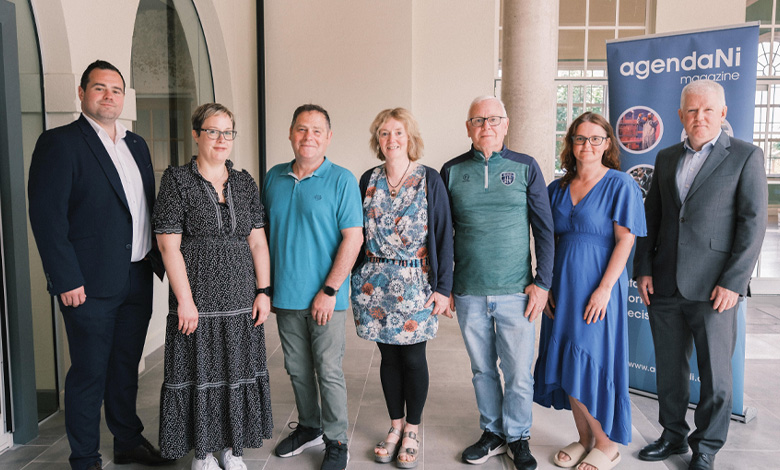
Mind Skills Training hosted a round table discussions with stakeholders from across the mental health sector to discuss how the system is coping with the current crisis and assess what needs to be done to improve services and prevent suicide.

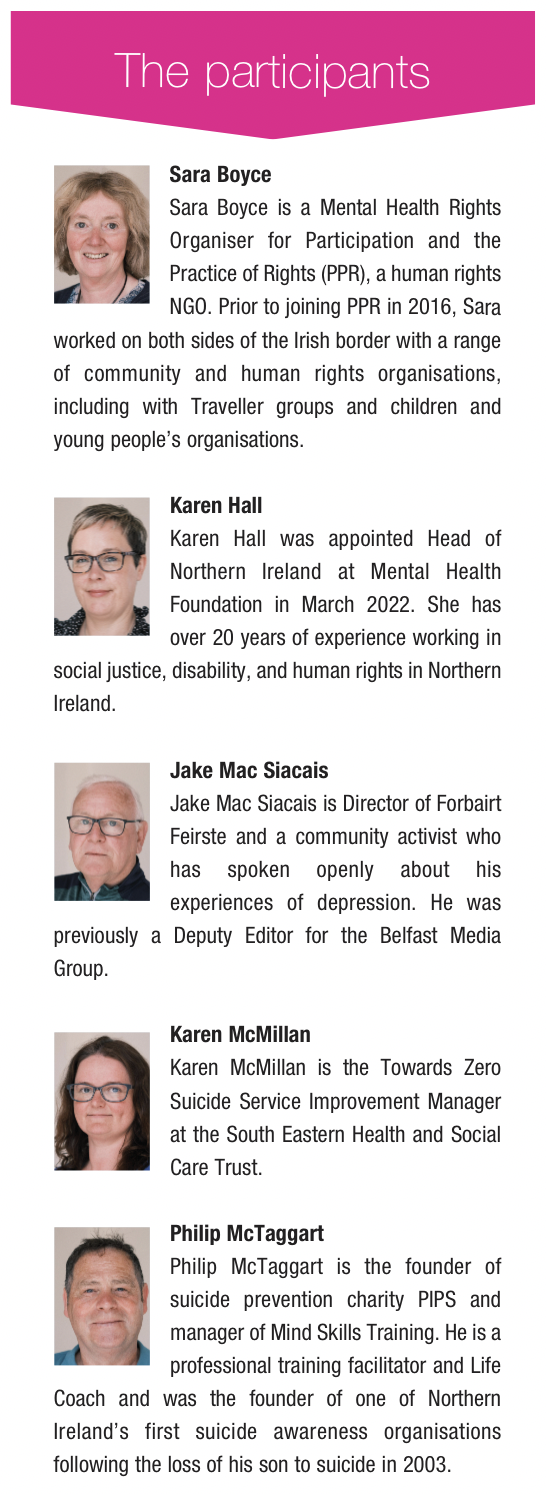
What is the social and economic impact of poor mental health in our society?
Jake Mac Siacais
I believe the impact occurs across three levels. The first is the large financial cost to society, with the Mental Health Foundation’s latest report conservatively estimating that to be £3.4 billion per annum. The second, and larger impact, is the human cost. That human cost accelerates and deepens the more an area slips into deprivation and distress, as the poorest in society are often least capable of dealing with crises. The third is the impact on the values of society as a whole. Historically, we were a collective, caring, and family-orientated society but that is no longer the case. Social and human distress is evident when walking through this city and crisis levels of poor mental health are impacting on our collective values.
Karen Hall
That £3.4 billion per annum economic cost was flagged by the author to be conservative but it is a staggering figure which we have used to make the argument for a greater focus on preventative services. In economic terms, that cost can be broken down into things like lost productivity, or the cost of care, but ultimately, it is about the impact on the individual and then the ripple effect on their family, community, and wider society, much of which is impossible to gauge. The evidence shows that targeted investment in prevention can have huge economic and social returns.
Sara Boyce
PPR’s ‘New Script’ for mental health campaign aims to flip this question on its head by looking at what is driving our enduring and permanent mental health crisis, rather than what the cost of it is. At a time when there is much debate around the 25th anniversary of the Good Friday Agreement, the evidence is incontrovertible that little has changed in relation to the geography of deep levels of inequality. International research highlights that inequality, and poverty linked to inequality, are large drivers of poor mental health. However, existing policies, such as the Mental Health Strategy and the Suicide Prevention Strategy, take a one-size-fits-all approach. That focus on areas of deprivation is lacking in the analysis.
Philip McTaggart
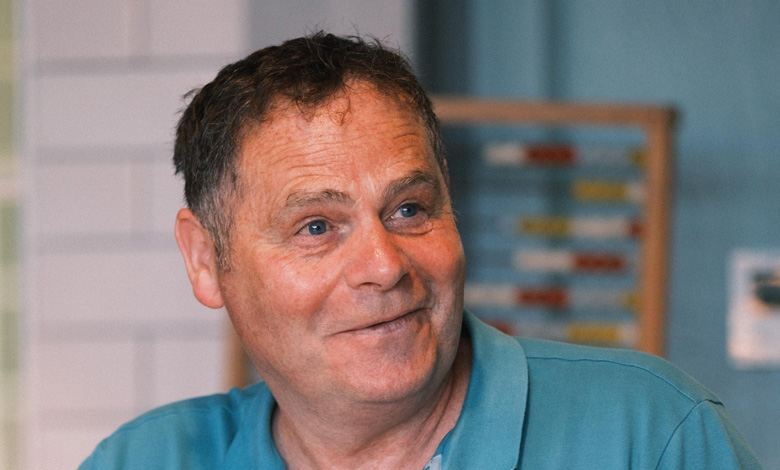
“It is very difficult to judge capacity on a regional basis because the reality is that there is a postcode lottery for services, and the longest waiting times tend to be in the most deprived areas.” Philip McTaggart
Mental health provision is drastically underfunded and as a result individuals, families, and communities have borne the impact. The implementation plan for the Mental Health Strategy outlined a funding requirement of £1.2 billion over 10 years, which has not yet been secured. However, even if available, given that the annual health budget is in the region of £6 billion per annum, it means that funding for mental health will only account for around 2 per cent of the overall health budget over the next decade. When you consider that for England and Wales, that figure is about 13 per cent, you can see that the scale and impact of the mental health crisis is not being reflected in the resources available to tackle it. Failing to adequately provide mental health services has a ripple effect economically and socially, which goes far beyond the individual.
Karen McMillan
The economic impact of poor mental health is far-reaching. Evidence shows that the cost of treating someone who becomes unwell from mental health can exceed treating physical ailments. However, the social cost is even greater, a feature which is especially prominent in areas of high inequality. Poor mental health can be transgenerational, as shown by the fact that we have young people who never lived through ‘the Troubles’ and yet still suffer its traumatising effects. In mental health services, we aim to deliver care in a biopsychosocial model. However, I believe there are opportunities for more effective, efficient, and creative models, combining our services so they are more accessible and holistic. That has to begin with education, consistent messaging, and the development of our social understanding of illness, prevention, and treatment.
Is there adequate capacity in mental health services in Northern Ireland? Are there any particular gaps that you would highlight?
Philip McTaggart
It is very difficult to judge capacity on a regional basis because the reality is that there is a postcode lottery for services, and the longest waiting times tend to be in the most deprived areas. You are three times more likely to die by suicide in areas of high deprivation than an affluent area. We need the services to improve in the areas where we know the problems are. That is the gap. A GP in west Belfast, one of the most deprived areas in the North, recently spoke of how the sizeable waiting lists for talking therapies for his patients meant that he felt compelled to prescribe medication, because it was the only near-term treatment option available.
Sara Boyce
More often than not, the conversation around gaps in mental health services focuses on funding, which is understandable given the derisory budget allocation. However, there are evident gaps that exist beyond capacity. All too often, we are hearing from service deliverers and those using services that people are being failed by the system. Potentially underpinning the reason why, the recent Northern Ireland Audit Office report on mental health services came to a shocking conclusion that the data was not available to evaluate the effectiveness of services in improving people’s mental health, and in particular to provide evidence on what works. It added that the Department and the trusts remain ‘unsighted’ as to whether the services provided represent value for money, which raises the question as to what the direction of travel set out in the decade-long Mental Health Strategy is based on. Add to that the recent revelation that there has been no oversight of community mental health services since 2009 and you can see that there are serious gaps that go beyond the challenges of finance and waiting lists.
Jake Mac Siacais

“We need to take human wellbeing out of a medicalised context and out into the community, where statutory medical services are interfaced with community support.” Jake Mac Siacais
The Audit Office report was shocking and essentially said we have bean counters counting the wrong beans. Any data that does exist is being viewed through a system without any qualitative data surrounding it. When the reality on the ground is that people are struggling to access services and where prescription drugs are being traded illegally, it is nothing short of a scandal that public money is being spent in a way that the public authorities cannot determine whether services are improving mental health.
Karen Hall
Transparency is a massive gap. For the community and voluntary sector, getting funding to deliver vital mental health services is a constant battle. Funding is often centralised within the health system, but why, if we have no transparency on what is working? I think the solution requires a transformation away from the medical model we have and towards community response. Someone seeking support is far more likely to approach a local service than attend A&E, so it is time to have the conversation about how we shift that money into areas where the drivers of poor mental health, such as unemployment and poverty, are recognised and can be best addressed.
Karen McMillan
In the South Eastern Trust, we collect quantitative and qualitative data, which includes service user feedback and engagement. This information helps us with service planning and delivery at a local level. Take our Mental Health Wellbeing Hub as an example of talking therapies. By way of example, an individual referred from a GP is seen within three weeks currently, getting six sessions with a counsellor provided within the community and voluntary sector. Across the region, Trusts are looking at an outcomes and accountability framework that involves service users. I believe that one of the best ways of knowing that a service is working is by hearing feedback from those availing of the service.
What has been your experience, or the experience of clients, in accessing mental health services?
Jake Mac Siacais
I had a mental health crisis in 2016 and my personal experience was that I was given medication that did not work and put on a waiting list that made support unattainable. I was forced to go privately, which is not an option available to most people, especially given the link between poor mental health and areas of deprivation. One of the things I noticed when talking about my situation was the sheer volume of others who felt similarly and how widespread the problem was. Their experience tended to be an unending roundabout of stop-gap measures with no incentive to get off and no community support network to encourage that. There is an epidemic of poor mental health in these communities and the services are not meeting the needs.
Philip McTaggart
The phrase I use is smiling depression. In my own experience of poor mental health, I remember questioning why I was the only one feeling like this while looking at others around me. It was only after hearing other people’s experiences that I realised the sheer volume of people suffering in silence and masking their feelings. In terms of access, it is very obvious that we have a system that is not tailored to individual needs. A model that sets out the amount of counselling sessions an individual will get even before they have been assessed is not needs-based. Similarly, a system that sees an individual have to re-tell their issues to different counsellors every time is not trauma informed. When the system works, it works well, but it is not designed to meet the volume and diversity of current need.
Sara Boyce
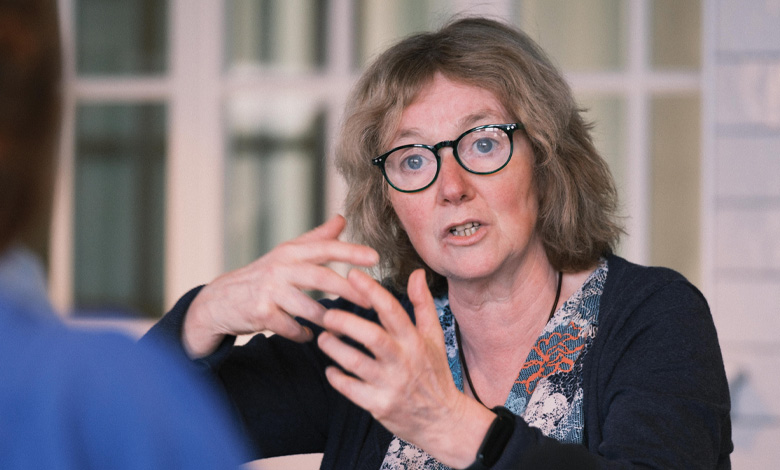
“We need the political will to skew resources into those areas in need, which have three times the suicide rate and five times the drug-related death rate.” Sara Boyce
All too often the approach is a medical one, be that anti-depressants or a waiting list, and not enough attention is paid to the fundamental importance of human connection, of building relationships and trust. The number of anti-depressant prescription items dispensed in Northern Ireland has increased fourfold from 2001 to 2022, at a cost of around £13 million annually. Could some of that money be better spent in community services? Our New Script campaign has gathered over 200 testimonies of people’s experiences with services and an over-riding theme of those testimonies is that people want choice. They want a say in their own care, rather than to be simply put into a system, where the dominant medicalised approach will dictate how they are treated. It is important to note that capacity is not a workforce problem, at least not in relation to counsellors. It is about where we choose to invest our resources.
Karan McMillan
By the time people access mental health services they may have been receiving treatment from their GP. Often their depression is situational, meaning that the medication will have had limited impact because the underlying causes such as adverse childhood experiences or trauma have never been effectively addressed. My experience on the frontline is that the best outcomes are often when services work well together; but all too often our community partners often have to compete for monies to continue to deliver their vital services. There is a requirement to continue to work in a more person-centred approach, one which has full recognition of all services, statutory community and voluntary that are available and are delivered on a daily basis.
Suicide numbers have been at crisis level for some time. What needs to be done to reduce the numbers of people taking their own lives?
Karen McMillan
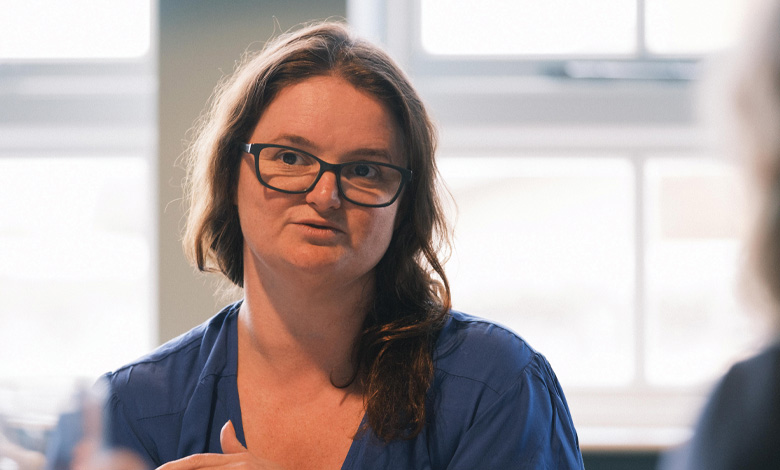
“As part of an overall plan, investment in resources in the community will support early intervention.” Karen McMillan
Seventy per cent of people who lose their life to suicide have not been in contact with mental health services. Communities need to be supported as there are people who are vulnerable and in need of help and support, which is easily accessible in the community. I have worked in the community with people experiencing mental health crises and those who have severe and enduring mental illness, working collaboratively with their families. Some of these people have to attend A&E as this is often the only accessible service out of hours. I believe there is an opportunity to improve early access by developing concepts such as crisis café models or the further role out of MATT (Multi Agency Triage Team), which supports people in the community. As part of an overall plan, investment in resources in the community will support early intervention. Helping reduce the stigma around mental health and having those brave conversations will support people to realise that although their circumstances are difficult, not every mental health crisis is a sign of mental illness. We also need to equip young people with the necessary social and psychological skills, to be able to identify and voice their emotions. Advocating the right service at the right time, educating people about mental health inpatient care, home treatment, and community services will support peoples’ understanding that not every crisis requires an acute hospital admission and that alternative services provide a similar level of care at home, keeping them connected to their community. There is a clear need for statutory services, but we need to develop more prevention services that can intervene early.
Jake Mac Siacais
The number of health trusts we have for 1.9 million people is incredible. The systemised silos that have been created mitigate against delivering effective services. There needs to be political will and some moral courage to address that. We need to take human wellbeing out of a medicalised context and out into the community, where statutory medical services are interfaced with community support. GP services, community services, and trust services should be coordinated.
Karen Hall
We are working with Healthy Living Centres at the moment and one of the key things identified is the number of people on waiting lists for treatment for physical health conditions. We hear a lot about waiting lists for physical treatment but nothing about waiting lists for mental health services. They are often related. We also talk a lot about individual trauma but there is also community trauma. Trauma will not go away and often becomes intergenerational. We really need to focus on the drivers of poor mental health, such as poverty and unemployment. This is not just an individual problem but a societal problem.
Sara Boyce
We need the political will to skew resources into those areas in need, which have three times the suicide rate and five times the drug-related death rate. We need to empower communities and take lessons from those instances where communities have taken leadership. For example, the Divis bridge over the Westlink in Belfast is a known suicide risk. Reducing access to means of suicide is an effective preventative measure. In 2017, the ‘New Script’ campaign worked with a local mental health group and commissioned a report with Queen’s University Belfast Science Shop, who came up with three different design modifications for the bridge. An inter-agency working group was established, but it is 2023 and the bridge still has not been modified. That is symptomatic of the lack of political will around suicide prevention. We cannot fix the existing system, which is not working, even with more resources. We need to do something different. Communities are coming together to do things themselves as people are dying and communities are in pain.
Philip McTaggart
Seventy per cent of people who take their own life are not known to the system but are known to the community. Not everyone needs to see a counsellor. Someone who can listen and show a bit of empathy, concern, and be non-judgmental can be very effective. We all have bad days in terms of mental health. I deliver training courses, and everyone says that the first point of contact should be the GP. We need to have a different way of education in schools to build resilience. We need to build resilience in our children and help them overcome challenges.
What one service or policy improvement would you like to see implemented?
Karen McMillan
While all of the mental health policies have merit, from a suicide prevention viewpoint, implementing ‘Protect Life 2 strategy’ will underpin everything. Our ‘Towards Zero Suicide’ project should also continue to be embedded. Toward Zero Suicide needs to be delivered in partnership with the community. ‘Protect Life2’ will make a phenomenal difference if implemented fully, but it will need the resources to succeed.
Jake Mac Siacais
Education and awareness training around mental health for GPs. Also, early education programmes within schools.
Karen Hall

“We need the political will to skew resources into those areas in need, which have three times the suicide rate and five times the drug-related death rate.” Sara Boyce
We need to address the drivers of poor mental health, such as poverty. We cannot treat our way out of the mental health crisis by looking only at symptoms.
Sara Boyce
Flip the script, away from a focus on chemical imbalance to a focus on power imbalance, at all levels of society. We need to move to a ‘New Script on Mental Health’ that is trauma-informed and human rights based.
Philip McTaggart
The vast majority of people who have died by suicide have gave an indication to someone in the year before they died. Education is power. If we can pick up what that person is trying to tell us; that is the first step in getting that person some help.





